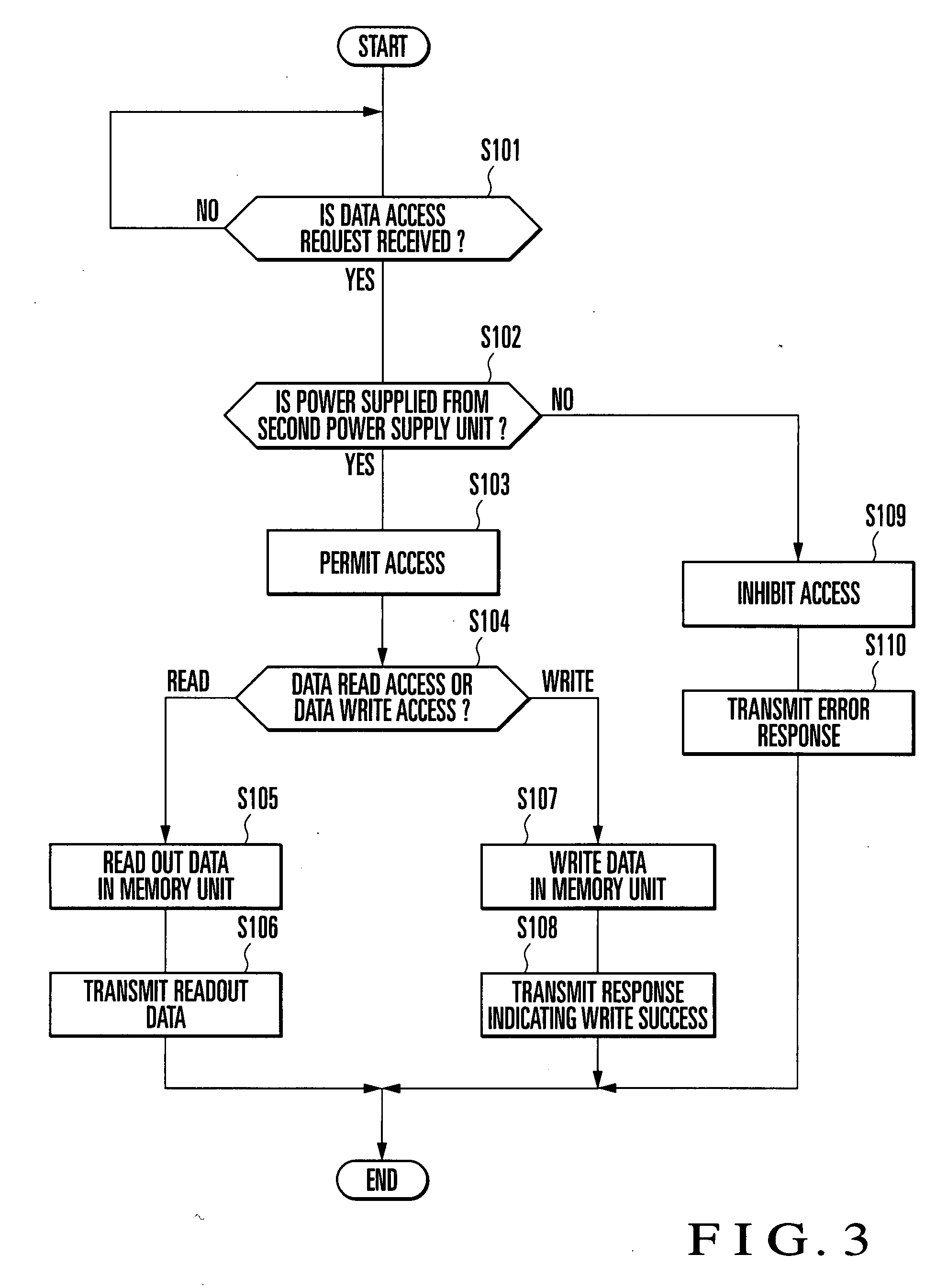RFID tag
- Summary
- Abstract
- Description
- Claims
- Application Information
AI Technical Summary
Benefits of technology
Problems solved by technology
Method used
Image
Examples
first embodiment
[0042]FIG. 1 shows the schematic arrangement of an RFID tag according to the first embodiment of the present invention. As shown in FIG. 1, an RFID tag 101 according to the first embodiment comprises a first antenna unit 1 which transmits / receives radio waves to / from an RFID reader / writer 200, a first power supply unit 2 which extracts power from the radio wave received by the first antenna unit 1, a data reception unit 3 which decodes a command contained in the radio wave received by the first antenna unit 1 and transmits the resultant data to a control unit 5, a data transmission unit 4 which encodes the return data transmitted from the control unit 5 in a transmission radio wave from the first antenna unit 1, the control unit 5 which interprets the command contained in the radio wave received by the first antenna unit 1 and accesses a memory unit 6, the memory unit 6 which stores an ID, user data, and the like and an external power input unit 12 which inputs external power. The e...
second embodiment
[0056]The RFID tag 101 shown in FIG. 1 is configured such that the first antenna unit 1 and the second antenna unit 7 use the same frequency band for communication. However, the frequency band of the first antenna unit 1 may differ from that of the second antenna unit 7, and the RFID tag 101 may include another radio wave source to the second antenna unit 7.
[0057]For example, as shown in FIG. 6, the frequency band of a first antenna unit 1 is made to differ from that of a second antenna unit 7, and a radio wave source 300 is provided for the second antenna unit 7 independently of an RFID reader / writer 200.
[0058]According to an RFID tag 10′, when the radio wave source 300 is located within a communicable distance L2 of the second antenna unit 7, the second antenna unit 7 receives a radio wave from the radio wave source 300. Since the power of the received radio wave is sufficiently high for the reception sensitivity of the second antenna unit 7, and hence a second power supply unit 8...
third embodiment
[0060]In the first embodiment, all the data stored in the memory unit 6 are protected from malicious access. However, it is conceivable that some data require no protection depending on the type of data. The third embodiment, therefore, sets only data requiring protection as a target for unauthorized access prevention by switching memory units for storage depending on the type of data, thereby further improving the convenience in using data.
[0061]FIG. 8 shows the schematic arrangement of an RFID tag according to the third embodiment of the present invention. An RFID tag 102 of the third embodiment has an arrangement in which a memory unit 6 is divided into a protected memory unit 6A and an unprotected memory unit 6B. The protected memory unit 6A stores data which need protection. The unprotected memory unit 6B stores data which do not need protection. A control unit 5 comprises two functional units, i.e., an access inhibition unit 5C which inhibits access from an RFID reader / writer ...
PUM
 Login to View More
Login to View More Abstract
Description
Claims
Application Information
 Login to View More
Login to View More - R&D
- Intellectual Property
- Life Sciences
- Materials
- Tech Scout
- Unparalleled Data Quality
- Higher Quality Content
- 60% Fewer Hallucinations
Browse by: Latest US Patents, China's latest patents, Technical Efficacy Thesaurus, Application Domain, Technology Topic, Popular Technical Reports.
© 2025 PatSnap. All rights reserved.Legal|Privacy policy|Modern Slavery Act Transparency Statement|Sitemap|About US| Contact US: help@patsnap.com



